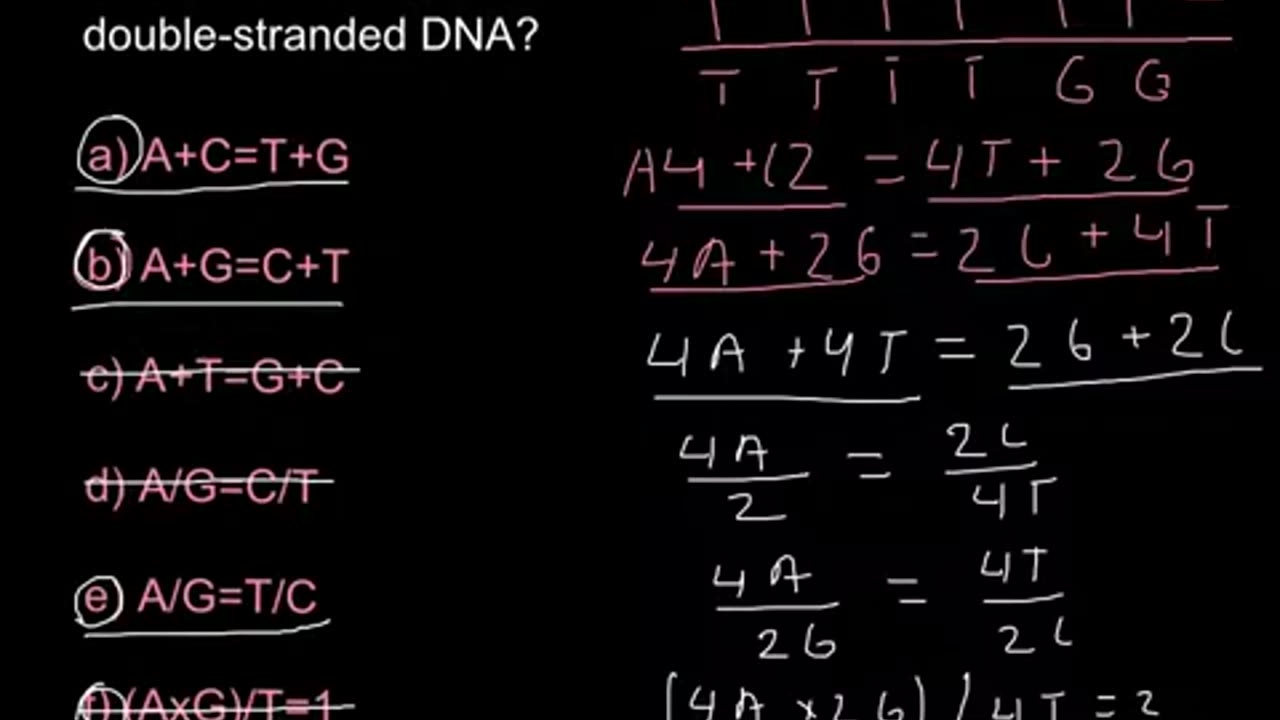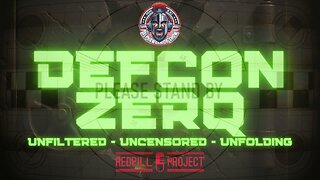Premium Only Content

Balancing DNA
Chemical analyses by scientists revealed the general chemical composition of nucleic acids (DNA and RNA): they are composed of nucleotides. A nucleotide consists of a phosphate group, a five-carbon sugar (deoxyribose in DNA and ribose in RNA), and a nitrogenous base bonded together.
Each nucleotide in a DNA molecule has one of four nitrogenous bases: adenine, guanine, thymine, and cytosine. The first two are called purine bases because their structure consists of two rings of atoms. The latter two are known as pyrimidine bases, since they have a single ring of atoms. RNA has three of the same nucleotides, but instead of thymine, RNA has uracil, another pyrimidine base. RNA will come back later, but for the remainder of this section and the next few sections, we will discuss only DNA.
Nitrogenous bases
Knowing what DNA is composed of is only half of the mystery, as scientists still could not work out the physical structure of the molecule. In the 1940s, Erwin Chargaff made an important discovery which had significant implications regarding the structure of DNA. He found that a DNA molecule contains about the same amount of adenine as thymine, and about the same amount of cytosine as guanine. This countered an earlier suggestion that the four bases existed in equal amounts in the DNA molecule.
James Watson and Francis Crick
The now famous scientists who worked out the actual structure of DNA were James Watson and Francis Crick. Their work was published in 1953. Using data from many other scientists, they deduced that the DNA molecule was arranged in the form of a double helix; that is, it looks like a twisted ladder. The sides of the ladder are composed of nucleotides with their nitrogenous bases pointed toward the center of the ladder. The rungs of the ladder are bonds between the bases on the opposite sides. To fit Chargaff's findings about the amounts of the bases in a DNA molecule, Watson and Crick suggested that adenine only forms a bond with thymine, and guanine only forms a bond with cytosine. DNA as a double helix So, if one side of the DNA molecule reads TTGACTA (we have abbreviated the names of the bases), then the other strand must read AACTGAT.
One final point about DNA's structure is that the opposite sides of the helix are said to be antiparallel. That means that they run in opposite directions. At the very end of each side of the molecule is, of course, a nucleotide. At one end, the phosphate group is the very last molecule, while at the other end, the sugar molecule is the last one. Scientists have dubbed the end with the phosphate group the 5' end (read "five prime"), and the end with the sugar the 3' end. Since the sides of the helix are antiparallel, the 3' end on one side of the ladder is opposite the 5' end on the other side.
-
 17:52
17:52
The Pascal Show
1 day ago $3.47 earned'PARENTS DON'T BELIEVE HE DID IT!' Candace Owens Says Tyler Robinson's Parents Don't Think He Did It
16.5K10 -
 1:46:23
1:46:23
The HotSeat
12 hours agoCommander In Chief and SECWAR Address The Troops, and I AM HERE FOR IT!
34.9K19 -
 2:07:00
2:07:00
The Michelle Moore Show
2 days ago'President Trump on Radicals, Susie Wiles In Question Again, Erika Kirk Evokes More Questions, Spiritual Calamity Coming For The President?' Guest, Mark Taylor: The Michelle Moore Show (Sept 29, 2025)
41K110 -
 LIVE
LIVE
Lofi Girl
2 years agoSynthwave Radio 🌌 - beats to chill/game to
624 watching -
 33:53
33:53
Stephen Gardner
8 hours ago🔥Antifa PANICS as Trump UNLEASHES Secret Weapon!
39.2K33 -
 2:48:28
2:48:28
Badlands Media
13 hours agoDEFCON ZERQ Ep. 011: RED OCTOBER BEGINS - ARK OF COVENANT - PRECIPICE
148K97 -
 2:08:09
2:08:09
The Charlie Kirk Show
7 hours agoTPUSA Presents This is The Turning Point Tour LIVE with Alex Clark and more!!
96.9K100 -
 1:33:53
1:33:53
Inverted World Live
7 hours agoMan Sees Creature in Loch Ness | Ep. 116
43K7 -
 3:04:06
3:04:06
PandaSub2000
16 hours agoExorcist: Legion VR | PSVR 2000 (Original Live Version)
20K1 -
 2:58:54
2:58:54
SmashJT
4 hours agoCollective Shout Keeps “HARRASSING” Me | Smashcast
26.5K1